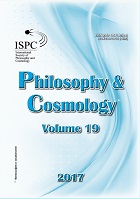Can The Chinese Robot Think?
Can The Chinese Robot Think?
Author(s): Dmytro SepetyiSubject(s): Philosophy, Social Sciences, Education, Psychology, Communication studies, Sociology, ICT Information and Communications Technologies
Published by: Международное философско-космологическое общество
Keywords: thinking;understanding;computer;algorithm;program;conscious mind;information;intentionality;semantics;epiphenomenal;
Summary/Abstract: In the paper, I discuss the Chinese room thought experiment, which was proposed by John Searle to show that executing by a computer of a program of data processing is not enough for genuine, i.e. understanding-based, thinking. The objection — advanced by Vadim Vasilyev — is also discussed that if the Chinese room is supplemented with devices to obtain external data, and so transformed into the Chinese robot, it may be attributed an understanding mind. Arguments have proposed that supplement those of Searle and give reason to turn down the objection. First, it is pointed out that the suggestion that the Chinese robot will have a specific program that has a quasi-semantic character and describes the relationship between linguistic signs and physical data is mistaken, because all the relations that programs assign are relations between units of inherently meaningless “data” — series of bits that have no inherent meaning but acquire their meaning only owing to conscious (human) interpreters. Second, it is argued that the robot’s acquiring “knowledge” (data, as states of its memory cells) in the process of its interaction with the external world makes no relevant difference because any such data can be just as well written in the same robot’s memory cells from the very beginning.
Journal: Philosophy and Cosmology
- Issue Year: 19/2017
- Issue No: 19
- Page Range: 143-153
- Page Count: 11
- Language: English

